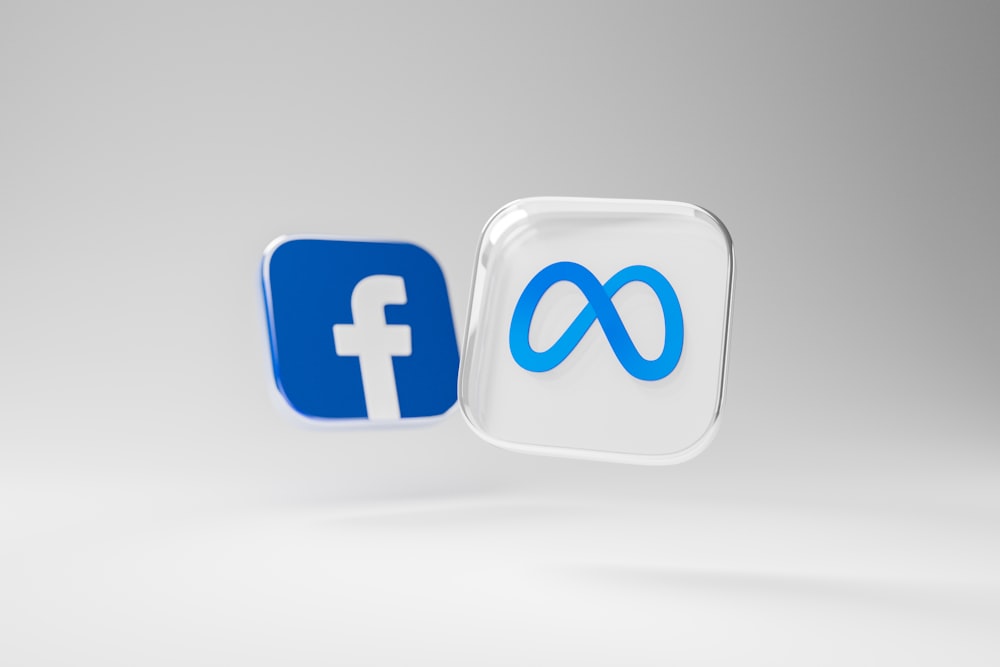

Meta has just released its annual results for 2024. The company’s comeback in 2023 was fantastic, and in 2024 it maintained the bull run. At this point I think a deep dive is warranted to understand if the company still has legs to grow after two fantastic years.  (Source: Seeking Alpha)
(Source: Seeking Alpha)
Recent Developments
META ended 2024 on a high note, delivering very solid numbers —$48.4 billion in Q4 revenue, up 21% from last year. The ad business is thriving, with prices up 14% per ad, showing that demand isn’t slowing down, even with privacy restrictions tightening. And with $77.8 billion in cash reserves, Meta can afford to enter the hyperscaler race.One of the biggest stories of the year was Meta AI’s rapid spread—over 700 million users are now interacting with its tools. The company is betting big on the next generation, with Llama 4 set to launch in 2025, promising serious upgrades in reasoning and multimodal understanding. Meanwhile, AI-powered advertising tools, particularly Andromeda AI, are quietly giving Meta an edge in targeting and ad optimization.The social side of the business is showing some unexpected momentum. WhatsApp hit 100 million U.S. users, a strong foothold that could evolve into something much bigger if Meta successfully integrates business messaging and payments at scale. Over at Threads, the user count swelled to 320 million monthly active users—a number that, a year ago, would have sounded wildly optimistic. Now, with early monetization tests underway, Threads is shaping up to be a real business rather than just a Twitter alternative.And then there’s hardware. Against most expectations, Ray-Ban Meta AI glasses turned out to be a surprise hit. Smart glasses have always been a tough sell, but Meta might have cracked the formula. The question now: can they scale? If the third generation hits 5–10 million units, they could be on their way to mainstream adoption, something few in the industry saw coming.Behind all of this is a massive AI infrastructure push. Meta is in deep, spending over $60 billion to stay ahead, including a 2-gigawatt AI data center—one of the largest ever built.Of course, it wasn’t all good news. Regulators in both the U.S. and EU are circling. The European Commission is probing its “subscription for no ads” model under the Digital Markets Act (DMA), while across the Atlantic, the Federal Trade Commission (FTC) is turning up the heat on data privacy and child protection policies. On top of that, the Irish Data Protection Commission hit Meta with a €1.2 billion fine for GDPR violations tied to EU-U.S. data transfers.Then there’s the Reality Labs money pit. Another $5 billion loss in Q4, and while the Quest and Horizon platforms are growing, mass adoption is still a big question mark. Investors are understandably skeptical—how long can Meta keep pouring billions into a vision that still hasn’t proven itself?The ad business also faces fresh challenges. Apple’s App Tracking Transparency (ATT) framework continues to choke off valuable data, making it harder for advertisers to fine-tune their targeting. Google will also start phasing out third-party cookies in 2025, cutting off another critical data source. Some advertisers are already shifting budgets toward platforms with stronger first-party data, like Amazon and TikTok.And then there’s the cost of staying ahead. Meta’s capital expenditures (CapEx) are expected to reach $60–$65 billion in 2025. That’s a massive bet. If AI monetization doesn’t scale fast enough, those investments could squeeze margins. Meanwhile, headcount is back on the rise, up 10% in 2024, even after layoffs.
Financials
In the 4Q24 earnings call, the management team stated that Meta closed out 2024 with big numbers, big investments, and even bigger bets on AI. The company pulled in $164.5 billion in revenue, 22% higher than last year, largely thanks to strong ad growth (+22%) and a massive 63% jump in WhatsApp Business revenue. That’s a staggering increase, but what really stands out is how efficiently Meta is squeezing profitability from its core operations, even with massive R&D spending.  (Source: Author)Margins are climbing fast—operating margin hit 42%, up from 35%, while net income exploded by 60% to $62.4 billion. Not a bad year at all. Advertising efficiency is a big part of this story, with AI-driven ad targeting (powered by Andromeda AI) pushing up ad prices by 10%. Meanwhile, SG&A dropped 15%, with Meta cutting legal costs by $1.55 billion—that alone had a noticeable impact on the bottom line.But here’s where things get interesting: Meta is spending more aggressively than ever. Capital expenditures (CapEx) jumped 45% to $39.23 billion, mainly fueling AI infrastructure, Llama 4 development, and custom silicon (MTIA chips). The company believes AI is the future, and Meta wants a front-row seat. But to do so aggressively the company is also inclined to use Debt, the debt-to-assets ratio from 12.1% to 15.8%. That’s far from alarming, but it does signal that Meta is willing to take on more leverage to fund its AI ambitions.Cash flow remains a fortress—Meta generated $91.3 billion in operating cash flow (+28%), stockpiled $77.8 billion in cash reserves, and boosted its current ratio to 2.7x. That means liquidity isn’t a concern, even with its massive investments. The company also returned $29.75 billion to shareholders via buybacks and dividends. AI is working—for now. Meta’s Family of Apps (FoA) business pulled in $87.1 billion in operating profit (+39%), proving that AI-powered ad optimization is making a real impact.
(Source: Author)Margins are climbing fast—operating margin hit 42%, up from 35%, while net income exploded by 60% to $62.4 billion. Not a bad year at all. Advertising efficiency is a big part of this story, with AI-driven ad targeting (powered by Andromeda AI) pushing up ad prices by 10%. Meanwhile, SG&A dropped 15%, with Meta cutting legal costs by $1.55 billion—that alone had a noticeable impact on the bottom line.But here’s where things get interesting: Meta is spending more aggressively than ever. Capital expenditures (CapEx) jumped 45% to $39.23 billion, mainly fueling AI infrastructure, Llama 4 development, and custom silicon (MTIA chips). The company believes AI is the future, and Meta wants a front-row seat. But to do so aggressively the company is also inclined to use Debt, the debt-to-assets ratio from 12.1% to 15.8%. That’s far from alarming, but it does signal that Meta is willing to take on more leverage to fund its AI ambitions.Cash flow remains a fortress—Meta generated $91.3 billion in operating cash flow (+28%), stockpiled $77.8 billion in cash reserves, and boosted its current ratio to 2.7x. That means liquidity isn’t a concern, even with its massive investments. The company also returned $29.75 billion to shareholders via buybacks and dividends. AI is working—for now. Meta’s Family of Apps (FoA) business pulled in $87.1 billion in operating profit (+39%), proving that AI-powered ad optimization is making a real impact.  (Source: Meta)Enters Reality Labs. This division burned through $17.7 billion in 2024, up from $16.1 billion last year. While Ray-Ban Meta AI glasses have shown some promise, mass adoption still isn’t happening. The metaverse bet isn’t dead, but it’s definitely not making money yet.Regulation is another wildcard. The EU’s Digital Markets Act (DMA) is tightening restrictions on ad targeting, and Meta was hit with a €1.2 billion fine for GDPR violations.
(Source: Meta)Enters Reality Labs. This division burned through $17.7 billion in 2024, up from $16.1 billion last year. While Ray-Ban Meta AI glasses have shown some promise, mass adoption still isn’t happening. The metaverse bet isn’t dead, but it’s definitely not making money yet.Regulation is another wildcard. The EU’s Digital Markets Act (DMA) is tightening restrictions on ad targeting, and Meta was hit with a €1.2 billion fine for GDPR violations.
Valuation
When it comes to valuation, Meta (META) is sitting in a reasonable range. A price-to-sales (P/S) ratio of 10.94 and a price-to-earnings (P/E) ratio of 28.81 put it ahead of Google but below the high-flyers like NVIDIA (NVDA) and Palantir (PLTR).  (Source: YCharts)Palantir, in particular, is in another stratosphere with a P/E ratio of 412.45 and a P/S of 74.98, a sign that the market is pricing it as one of the first commercially viable AI application. Compare that to Microsoft (MSFT), which has a P/E of 33.42 and a P/S of 11.84.For a company that just delivered 60% net income growth and a 42% operating margin, a P/E of 28.81 isn’t extreme, especially compared to the AI darlings. But it’s also no longer the deep value play it was a year ago. The question now is whether Meta’s AI investments—especially in ad optimization, AI-driven platforms, and hardware—can justify further multiple expansion. If AI monetization scales faster than expected, Meta still has room to run. But if regulatory challenges or competition bite harder, this valuation could start looking stretched.
(Source: YCharts)Palantir, in particular, is in another stratosphere with a P/E ratio of 412.45 and a P/S of 74.98, a sign that the market is pricing it as one of the first commercially viable AI application. Compare that to Microsoft (MSFT), which has a P/E of 33.42 and a P/S of 11.84.For a company that just delivered 60% net income growth and a 42% operating margin, a P/E of 28.81 isn’t extreme, especially compared to the AI darlings. But it’s also no longer the deep value play it was a year ago. The question now is whether Meta’s AI investments—especially in ad optimization, AI-driven platforms, and hardware—can justify further multiple expansion. If AI monetization scales faster than expected, Meta still has room to run. But if regulatory challenges or competition bite harder, this valuation could start looking stretched.
Investment Theses
Meta AI & Llama 4: From Cost Center to Growth Engine.AI is turning into a revenue driver. 700 million monthly users are already engaging with Meta AI, making it the most-used AI assistant globally. The real shift, though, comes with Llama 4, set to launch in 2025, which will push beyond basic AI chatbots and into AI agents capable of executing multi-step tasks autonomously. The ad business is already seeing early AI-driven gains. Andromeda AI improved conversion rates by 8%, giving Meta an edge in ad pricing. But the real monetization play is still largely untapped since premium AI features, business APIs, and CPC-based AI recommendations could open new revenue streams, making Meta AI a direct contributor to top-line growth instead of just a cost center.The Ad Business Is Getting Stronger, Even With HeadwindsDespite all the talk of regulatory pressure and privacy restrictions, Meta’s ad business is still firing on all cylinders. The numbers tell the story—Q4 ad revenue hit $46.8B, up 21% YoY. WhatsApp Business hit 100M U.S. users, while Threads grew to 320M monthly active users, both of which add fresh ad real estate for Meta to monetize. More surface area for ads, plus AI-driven targeting improvements, equals higher ad efficiency and pricing power. A key catalyst here is Advantage+, Meta’s AI-powered ad ranking and automation system, which reduces the need for manual advertiser intervention. If advertisers can automate campaign optimization and get better returns, they’ll allocate more ad dollars to Meta’s platform.AI Infrastructure: Meta’s Disguised MoatMeta is building its own AI stack, and that changes the game. A $60–65 billion CapEx investment in AI infrastructure might not be just a short-term spending spree—it might be a strategic moat. Meta is rolling out MTIA (Meta Training & Inference Accelerator), its in-house AI chip, which reduces its reliance on Nvidia while cutting AI compute costs. At the same time, its 2+ gigawatt AI data center footprint is being built to scale Llama 4 training and inference workloads. As AI shifts from training-heavy to inference-heavy models, the real cost driver becomes inference compute—and companies dependent on third-party chips will feel the squeeze. Meta, on the other hand, is solving this problem before it happens, giving itself a structural cost advantage over competitors like Snap, TikTok, and X.Smart Glasses & AI Wearables: The Next Computing Wave?Few expected Meta’s Ray-Ban AI glasses to be a hit, but early adoption is proving there’s real demand. The idea of AI-powered wearables has struggled in the past, but this time, the use cases are compelling—real-time translation, object recognition, hands-free navigation, and instant AI assistance. If Meta can scale this category to 5–10 million units, it could mark the beginning of a post-smartphone computing shift. That’s not a small claim—if AI glasses become mainstream, Meta would be in a prime position to lead a platform transition, much like Apple did with smartphones.
Risks to thesis
For all of Meta’s AI-driven ad efficiency, regulators are tightening the screws, especially in Europe. The Digital Markets Act (DMA) and GDPR are forcing Meta to offer a “subscription for no ads” model, a shift that could limit data collection and weaken ad targeting effectiveness. If too many users opt out, advertisers lose precision, and Meta loses pricing power.Then there’s Apple and Google, both of which are making things harder. Apple’s App Tracking Transparency (ATT) has already cost Meta over $10B in lost ad revenue, and it’s about to get worse—Google is phasing out third-party cookies in 2025, further restricting tracking across the web.On another front, Meta is going all-in on AI, but here’s the issue: 700M+ people are using Meta AI, yet there’s no clear revenue model. Right now, AI-powered search and recommendations are great for engagement—but they could also disrupt Meta’s ad business. If users start getting answers directly from Meta AI instead of clicking on search results or ads, engagement with monetized content could drop. That’s a real risk to Meta’s core ad model—it’s happened before, with Google’s AI-powered search impacting traditional paid search ads.Then there’s the sheer cost of AI. Meta is spending $60–65B on AI infrastructure, but without direct monetization, the return on investment (ROI) is still unclear. Unlike cloud providers that can sell AI compute directly (like Microsoft and Google), Meta needs AI to drive engagement and ads—if that doesn’t happen fast enough, margins could take a hit.Reality Labs continues to be a major financial drag, burning $17.7B in 2024 with no clear path to profitability. While Meta has repositioned its AI glasses as a consumer success, Quest and Horizon still lack mass adoption. VR headset sales are slowing, and mixed reality hasn’t reached must-have status.The Ray-Ban Meta AI glasses were a win, but can they scale? If they don’t cross the 5M–10M unit mark, they could remain a niche product instead of the next mainstream computing shift. Meanwhile, Apple Vision Pro is entering the market, and if Apple sets the standard for AR/VR, Meta could face an uphill battle in wearables.Then there’s the AI arms race. OpenAI, Google, and Microsoft are all making aggressive moves. OpenAI’s GPT-5 and AI Agents could make Meta AI feel outdated, while Google’s Gemini and Microsoft’s Copilot are already deeply embedded in enterprise workflows. Right now, Meta AI is more consumer-focused, but that may not be enough to compete at the highest level.
Conclusion
We have come a long way, let’s now wrap this up. If we use a bull and bear scenario for this stock, we can better capture the trends at play here. We can use the high and low estimates for 2027 to build our scenarios, while also considering stable diluted share count, and a 11.8x sales multiple for the bull scenario (same as Microsoft) and 7.7x for the bear scenario (same as Google).  (Source: Seeking Alpha)The results are the following:
(Source: Seeking Alpha)The results are the following: (Source: Author)These results point to an asymmetric risk reward proposition, very favorable to a long position. Therefore, I am rating this a buy, probably one of the best risk reward propositions that I have seen so far this year.More By This Author:Nvidia Bearish Momentum Explained
(Source: Author)These results point to an asymmetric risk reward proposition, very favorable to a long position. Therefore, I am rating this a buy, probably one of the best risk reward propositions that I have seen so far this year.More By This Author:Nvidia Bearish Momentum Explained
Hermès: A Fantastic Business
Magic Touch Or Misstep? Reflections On Tapestry
















